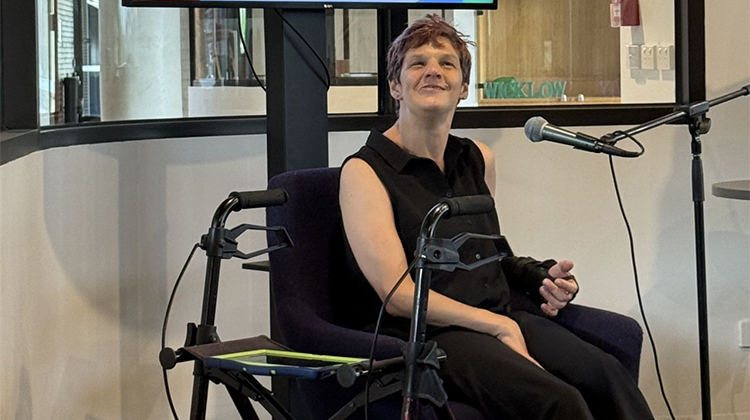Disability-Inclusive Communities are Vibrant Communities

Inclusive communities are vibrant communities because everyone has a contribution to make. Every person has unique skills, talents, perspectives and personalities to offer.
This Wednesday December 3rd is the United Nations International Day of People with Disabilities. A day to celebrate the value of people with disabilities and the contributions they bring to society. While we celebrate the accessibility and inclusion that society has implemented, we recognise that there is still much progress to be made. The full potential, expression and contributions of people with disabilities are yet to be realised. A commitment to build accessibility and inclusion into society is a commitment to see its full potential realised.
I'm Stevie Wills; a performance poet, writer and speaker. I live with cerebral palsy. For over a decade I have advocated for the inclusion and empowerment of people with disabilities.
Did you know that one in five Australians live with a disability? Yet people with disabilities face barriers to fully participating in community. Ways that society is constructed leaves people with disabilities marginalised.
The social model of disability defines a person's experience of disability and exclusion as the interaction between their impairment, or condition, and the barriers that they face.
Let's look at an example. Sarah loves music. She is a skilled keyboard player and would love to join the school band. She has spina bifida and uses a wheelchair. Sarah’s school has a designated room for the band to rehearse in, but there are steps leading up to it.
What is stopping Sarah from rehearsing with the school band?
It’s the steps.
Sarah has a wheelchair, so she can move around as she wants to. Her impairment is not stopping her from rehearsing with the school band.
It’s the steps; the way society has been built that stops her from rehearsing with the band.
It's not a person's impairment that stops them from fully participating in community, but the way society has been built; the barriers it has constructed. Barriers increase a person's experience of disability and marginalsation. The way to build accessibility and inclusion into community, is to identify and remove barriers. A person's experience of disability and exclusion is decreased as barriers are removed.
There are four types of barriers:
● Physical barriers
○ Uneven terrain, steps, narrow doorways, obstructed pathways, lack of accessible toilets, parking and transport.
● Communicational barriers
○ Lack of clear spoken or written communication. lack of sign language, braille or large print.
● Institutional barriers
○ Discriminatory laws, lack of inclusive policies or the implementation of them. Lack of budget or funding allocated to inclusion.
● Attitudinal barriers
○ Stigma, discrimination, negative assumptions
I find that attitudinal barriers are the most difficult to overcome. If people value and respect me, I can collaborate with them to remove barriers. If people pity me, or put me on a pedestal, I can't build a genuine relationship with them…much less collaborate with them to remove barriers.
There are four types of impairments that people with disabilities live with:
● Physical: Difficulty in the performance of body functions.
○ E.g., Walking, moving arms and legs, using hands, spinal cord injury, cerebral palsy, amputation…
● Sensory: Difficulty seeing, hearing or communicating.
○ E.g., Deaf people, hard of hearing, blind or have low vision…
● Psychosocial: Chronic severe mental disorders or psychosocial distress.
○ E. g. schizophrenia, depression, bipolar…
● Intellectual: Difficulty with language, reasoning, memory, personal care.
○ E.g., Down’s syndrome, cognitive impairments/brain injuries
In secondary school, my peers were never deliberately cruel to me, but I was left out…left behind. My peers were fast paced. They moved around the schoolgrounds fast. My electric wheelchair, even at high speed, couldn't keep up with them. It takes me longer to form my words out, so in group conversations, I couldn’t get a word in. Friendships with my peers never developed.
Now I run a business to equip teenagers to include their peers with disabilities. I called my business Inclusion Vibrancy. I run workshops for young people, combining my personal experience, theory and practical tips and humor.
For more information check out www.steviewills.com or contact me at [email protected]. Linkedin Instagram
This International Day of People with Disabilities, I invite you to reflect on the barriers that exist in your school community, and how you can collaborate to remove barriers and enjoy Inclusion Vibrancy!